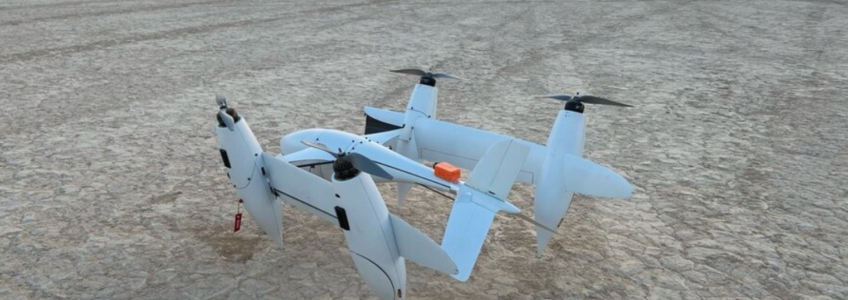The aviation sector is filled with innovations that are setting the tone for the future with eVTOL aircraft leading the charge. Several companies have created impressive designs but this new Transwing design is something else offering improved efficiency across the board.
How Is It Different To Other eVTOL Designs?
The Transwing eVTOL is completely different to anything else currently in development. It’s not a basic multicopter like the Volocopter 2X, a lift and cruise like the Archer Maker or a vectored thrust configuration like the Joby S4 or Lilium Jet. The Transwing is also not a typical tilt-wing design such as the design Dufour Aerospace is working on.
Using a unique and patented folding wing design, the Transwing’s propellers on propulsion pods are distributed down the length of a very long set of wings. These are designed to fold back on dihedral pivot points along the wing which are operated by control rods fixed to moving actuators on the main body.
When the Transwing eVTOL is fully folded, the wings are vertical and parallel with the sides of the aircraft. That means all the propellers point skyward in a typical multicopter configuration.
Benefits Of The Transwing eVTOL Design
The Transwing eVTOL system is “aerodynamically benign” at all stages of transition. This includes the fully folded and fully extended states which result in no loss of control as you shift from hover onto the wings. The Transwing will also be more comfortable for passengers than multicopter designs as the cabins tilt to achieve horizontal movement.
If this eVTOL sounds like a big deal it’s because it is! If you think about it, there’s only so much space on a helipad which is where this incredibly compact Transwing design comes in handy on the ground and in VTOL operations.
However, once it unfolds it shows off a set of enormous wings providing super-efficient flight. The design could scale far beyond the size of most long-range eVTOL competitors while still compact enough to land at an urban vertipad.
Related: ‘Audi Combines Electric Car With Flying Taxi Quadcopter’
Why This eVTOL Could Be The Next Best Thing
Even without scaling up, this design has an enormous effect as it only needs about a quarter of the landing space of a fixed-wing vectored thrust or lift and cruise VTOL. It’s so compact you can fit 5.5 times more aircraft at a facility to charge and put a decent size Transwing on a trailer to drive it around ready to fly.
If that doesn’t impress, the sheer efficiency of using a large wing system surely must as it completely negates any disadvantage around using a broad wingspan. That means PteroDynamics can design even bigger aircraft which could have a positive effect on cargo-carrying efficiency.
According to PteroDynamics: “Transwing aircraft have much greater range, endurance, and cargo-carrying efficiency as compared to all other VTOL designs.” And “given any aircraft footprint size and payload requirements, Transwing aircraft will fly several times as far as any VTOL competitor.”
Specifications And Powertrain Options
This post might mention eVTOL but it doesn’t have to be electric. PteroDynamics can also build one with any fuel system and if it doesn’t use fast-responding electric motors, they will install variable-pitch rotors for faster thrust balancing in hover mode. Considering the extended range these motors offer, you can also add it to an electric version for even better range.
It certainly seems to a promising idea but will it go from concept to production or remain on the shelves of the design department? PteroDynamics has already built and flown scale prototype Transwing aircraft with 4.2-ft, 6.6-ft and 12.3-ft (1.3, 2 and 3.5-m) wingspans.
Some of the flight videos are currently available to view on YouTube showing stable and smooth take-off, soaring winged flight and well-controlled landings. Whilst they performed admirably in the air, there is some wing wobble when landing but they could resolve this during the development phase.
Final Thoughts
PteroDynamics is open to license the patented tech but the company is also planning to manufacture and run its own flight services. They plan on starting with small-scale cargo drones and higher-spec military and government models, to eventually focus on passenger air taxis.
Company representatives confirmed that they are setting up a 9,200-sq-ft (854.7-sq-m) engineering facility in Colorado to advance its R&D operations. They are also close to signing a deal that could see the Transwing eVTOL delivered for use under an experimental license within 12 months.
Besides that, there’s no other indication of where they are heading in terms of commercialisation. Either way, it’s an amazing feat of engineering and we can wait to see what happens next.
For more interesting articles covering the latest in technology, engineering and manufacturing, please read our blog or visit our website for information on what we do.


Recent Comments